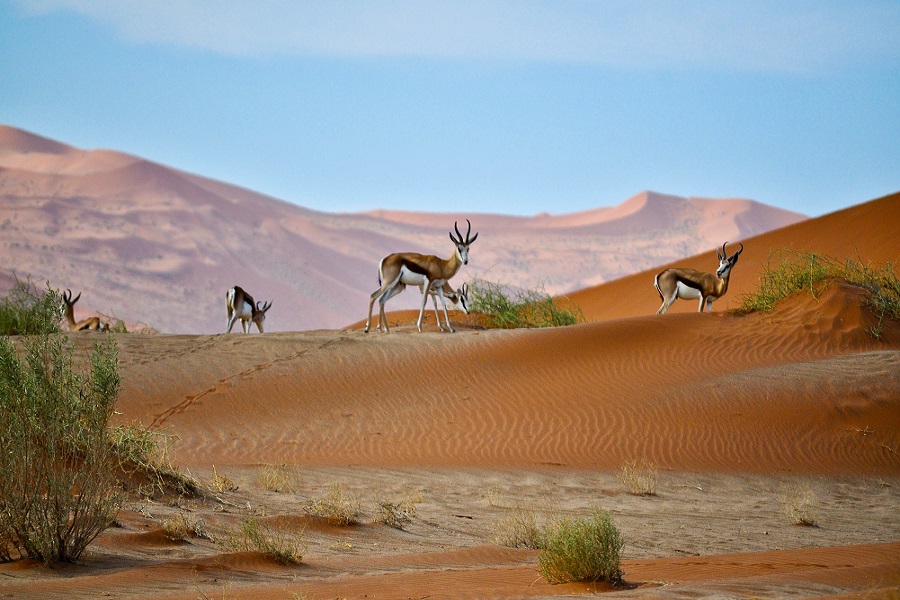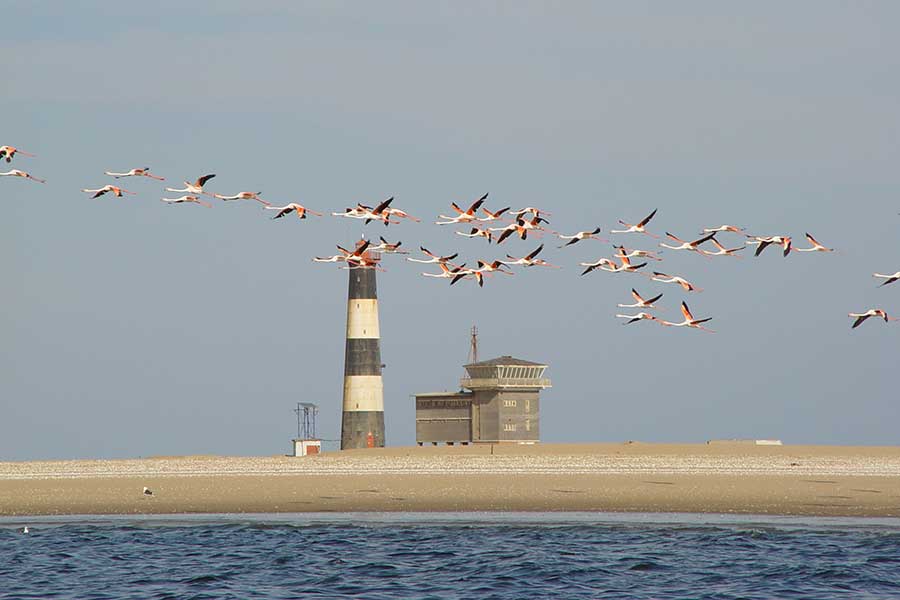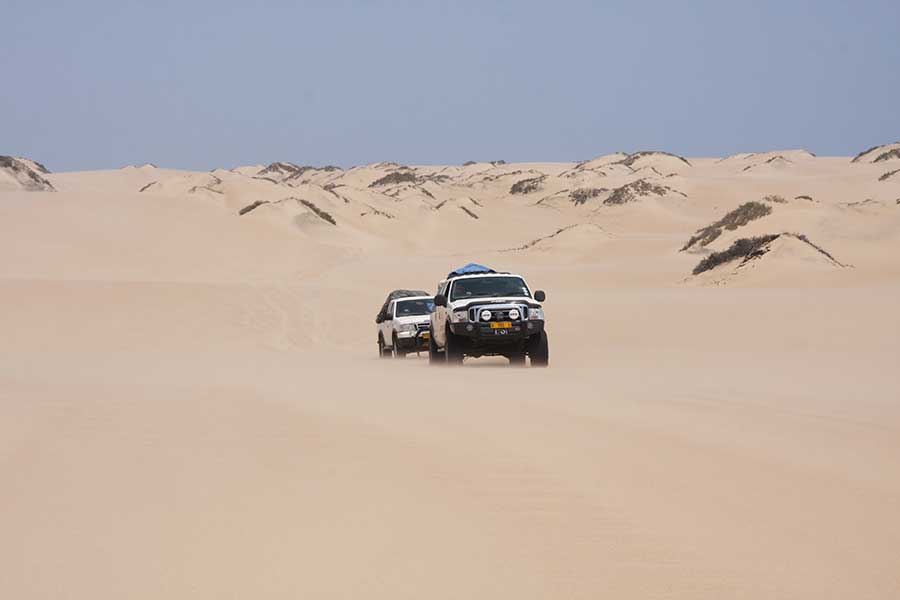With the largest Canyon in the south through the oldest Desert in the world and one of the largest Game Parks in Africa, one can traverse through these areas whilst travelling in one country, namely Namibia.
Travel to namibia
The Orange river in the south acts as a border, to the west the Atlantic seaboard, to the North the Kunene river and to the east Botswana.
We offer packages including any of the following destinations:
Fish River Canyon | Luderitz | Namib Naukluft Park | Kalahari Desert | Sossusvlei | Swakopmund | Damaraland | Skeleton Coast Park | Kaokoland | Etosha National Park
The best time to travel to namibia
April to May
This is a lovely time to visit. The rainy season has ended, the air is crisp and clean, landscape lush and green and free of the drier dust.
June to August
This is generally accepted as the winter months, it cools down and the nights can become quite chilly. However, as it becomes drier, the only permanent water for animals are the waterholes and the game is certainly more easily viewed.
September and October
These are the best game viewing months, the vegetation has dried out and the animals are very easily seen and are drawn to the waterholes. This is the start of the summer months and temperatures do rise.
November
This can be the start of the rainy season or the hot dry weather can continue. Game viewing is still good and if the rains have started you will be able to view the transformation of the dry desert landscape into lush green grasslands..
Special interest groups should take note of the following: the best birding safaris in Africa are during the summer months because of the greater variety of species to be found. Best botanical months are December to May when the vegetation turns green, and also when most plants are in flower. Game viewing safaris are best from May till October.
Partly covered by the Namib Desert in the west, Namibia has a general dry and agreeable climate. December to March is considered the rainy season. The days are warmer, more humid, with sporadic afternoon showers.
Popular Namibia Activities
Game drives in Etosha National Park
Quad biking in Namib Dunes
Kayak with dolphins in Walvis Bay
Living desert tour
Kolmanskop ghost town, Luderitz
Tracking desert rhino and elephant in Damaraland
Our namibia Highlights
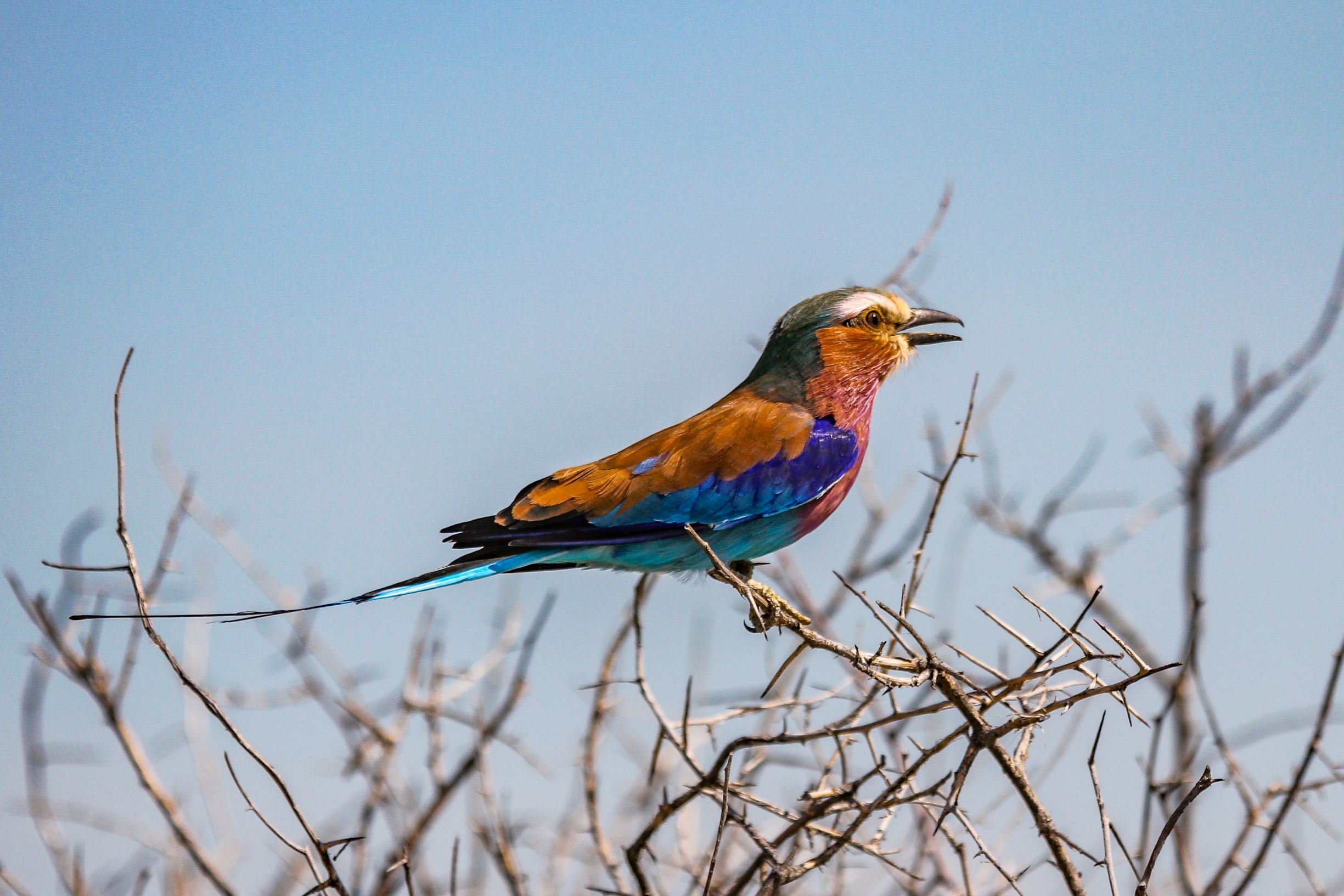
The caprivi strip
The Caprivi Strip is an exciting destination for the adventurous Namibia traveller. It stretches like an arm across the north-eastern Namibia, opening up into a hand-shaped, fertile wilderness of riverine forests, swamps and woodland in Eastern Caprivi. The Caprivi Strip is a total contrast to the arid grandeur of the rest of Namibia. With its abundant birdlife, the area is gaining a reputation as a retreat for birdwatchers and it is also known for spectacular Namibia safari game viewing either in open 4×4 vehicles or by river craft. Among the better known reserves in the Caprivi are the Mahango Game Reserve, the Mudumu National park and the Mamili National Park.
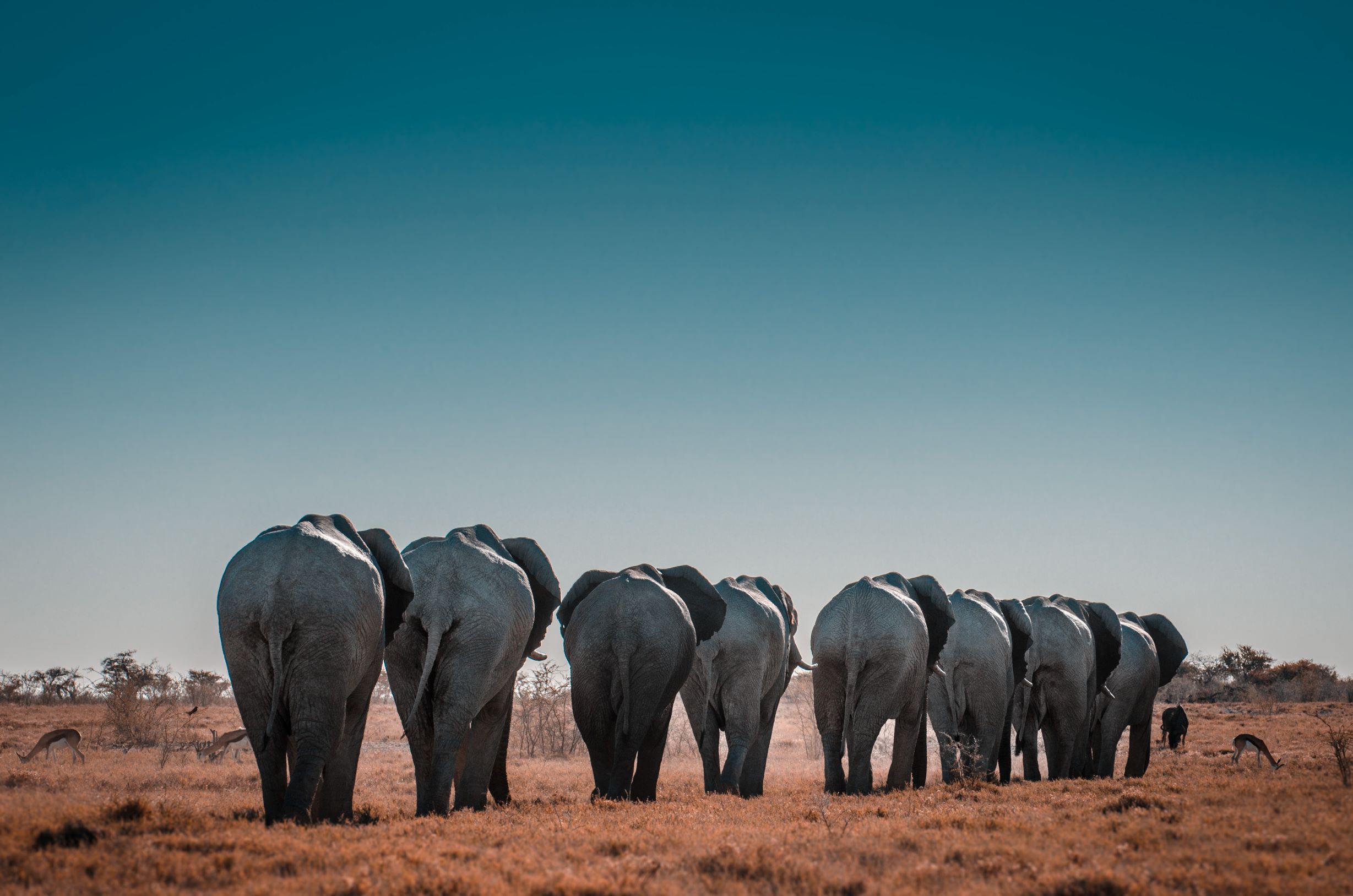
etosha National Park
This is one of the greatest and most special Namibia safari destinations because of the great variety of game and unique vegetation to be found here. It covers 22, 270 square kilometre of country, ranging from dense bush to open plains. Its heart is the vast Etosha Pan, a shimmering grey white expanse of salt and dusty clay that is roughly 130km long. Thousands of years ago the pan was a lake fed by the Kunene River. But the river changed course and the lake shrank and dried up, the wind and heat eroding its surface so that it became slightly lower than the surrounding bush.
The name means “the place of dry water” or “ the land of mirages” which is an apt description of the mirages, which hover over its blinding surface. The Etosha Pan is parched and shimmering silver-white for most of the year, only filling with water about a metre deep in very rainy periods – whereupon enormous numbers of waterfowl flock to breed – a sight that is the inspiration for many a Namibia holiday. Game in Etosha includes several rare and endangered species such as black rhino and black-faced impala.
The best time for game viewing Namibia safaris is from May to October. There are many species all year round at the eastern end, attracted by the waterholes near Namutoni. Here, after the rains (January – March), the veld is green and flamingos and pelicans fly in to breed on the pans, adding to the 300 species of birds and making the spectrum of wildlife close to unique. The western half of the park has fewer roads than the area near the Pan. It includes the Fairytale Wood or Haunted Forest, a dense stand of a curious tree unique to Namibia called Moringa Ovalifolia, which resembles a thinner baobab.. The area also protects several thousand pelicans at breeding time.
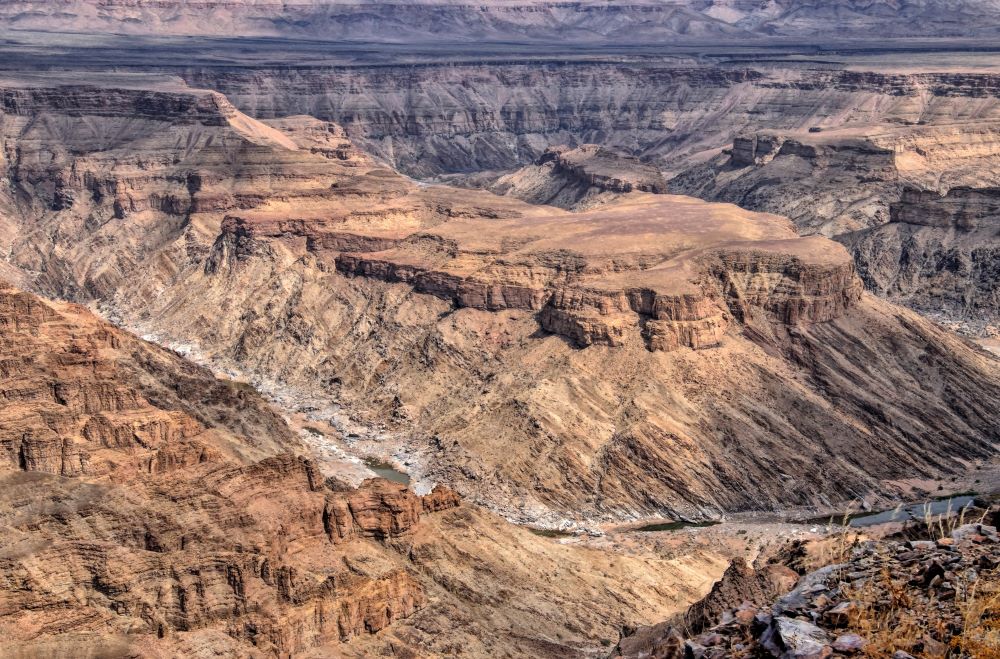
fish river canyon
Namibia is home to the second largest canyon in the world after the Grand Canyon, the Fish River Canyon. A protected wildlife area, well stocked with game, it is more interesting for its geology. There are hot mineral springs in the floor of the Canyon at the Ais-Ais rest camp. The attraction of this rugged mountain land is its isolated and other worldly landscape and wealth of interesting xerophytic plants, such as the halfmens or elephant’s trunk. Set in a harsh, stony plain, dotted with drought-resistant succulents such as the distinctive quiver tree or kokerboom, the canyon is a spectacular natural phenomenon that took hundreds of millions of years to evolve into its current shape. Because the river flows intermittently, there is always water in certain of the pools, except in very dry years. The pools contain small and largemouth yellow fish, sharptooth catfish, Mozambique tilapia and common carp, and are also frequented by the water monitor or leguan. Baboon, rock dassie, ground squirrel and klipspringer are often seen in the canyon, while the presence of leopard and the densely vegetated lower reaches, north of Ais-Ais, indicate mountain zebra. An interesting variety of birds, such as the Olive Thrush, Cape Robin and African Black duck are found in the canyon and are a popular Namibia safari attraction.
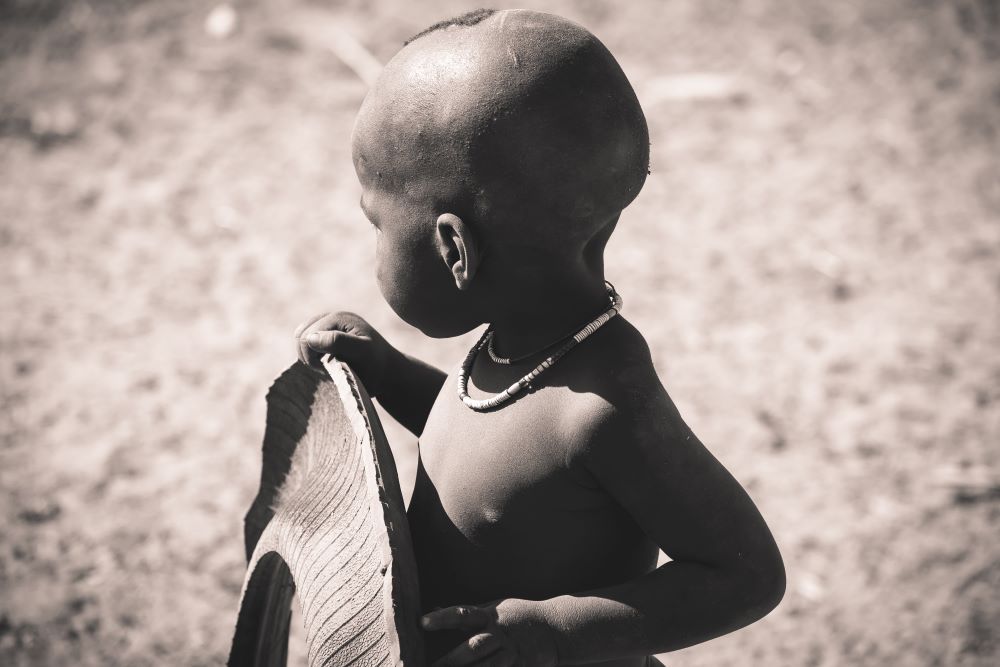
kaokoland
This is the traditional home of the Himba. Relying on the bare essentials due to the extreme environment in which they live, they still preserve a rich cultural tradition and a distinctive way of dress, arranging their hair in intricate plaits and covering their skin in ochre and scented herbs. The major river in this area is the Kunene, which forms the border with Angola. Ruacana Falls, one of the highest waterfalls found anywhere in Africa, is also found along the Kunene River. South of here are spectacular rock formations, including the Museum Crater, the best place to view the welwitschia mirabilis, one of the oldest living plant species, a type of tree which has adapted to the arid conditions by becoming flat and spreading its tough foliage along the ground.
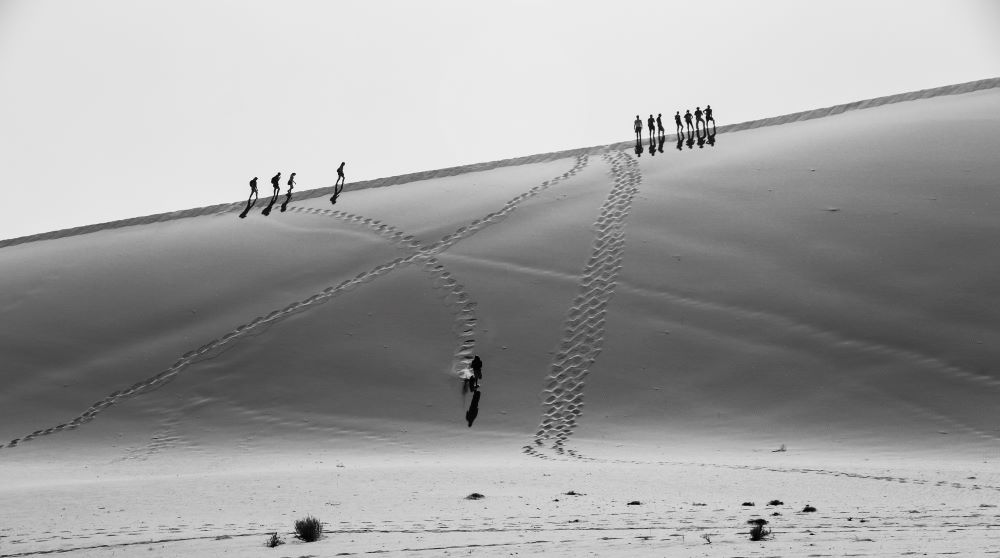
namib-naukluft park
This is the largest conservation area in Namibia, incorporating most of the Namib Desert after which Namibia takes its name. This is a land of endless horizons, a place of silence and of solitude and a popular Namibia travel destination. A climb to the top of one of the gigantic sand dunes surrounding Sossusvlei to watch the sunset cast its shadow over the ancient dunes is so haunting, it will be etched in your mind forever. Near Sossusvlei, the Sesriem Canyon has been gouged out of rock over the centuries by the Tsauchab River and is now mostly small pools of water on a gravel bed, attracting many birds and animals. To the south of the park, near Luderitz, one can explore the deserted houses in the ghost town of Kolmanskop and to the west at Swakopmund, one can marvel at the fantastic rock formations of the ‘Moon Landscape’ and visit Sandwich Harbour. One of Namibia’s striking contrasts, the Naukluft mountain range, differs vastly from the lower desert area where the renowned quiver trees live well in tough surroundings and mountain trees dot the landscape. This area is good for hiking. Abundant birdlife includes pelicans and flocks of up to 40 000 flamingos, a beautiful accompaniment to any Namibia travel experience.
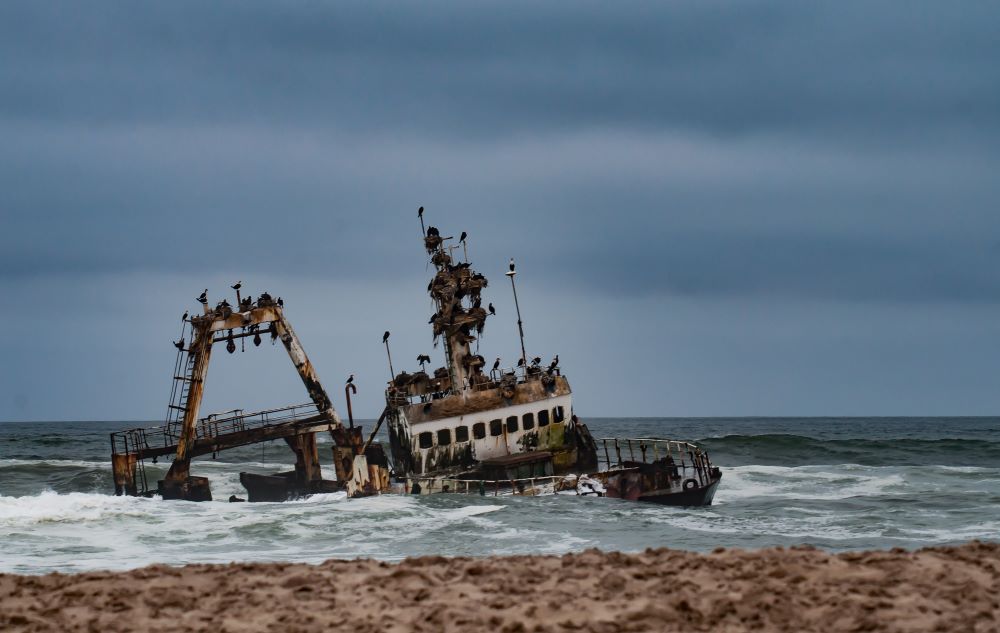
skeleton coast national park
The southern section of the Skeleton Coast Park, lies between the Ugab and Hoanib rivers and lures anglers from far and wide to its superb fishing grounds. As the shoreline moved over the years, vessels which floundered on offshore reefs and sand now lie fully exposed on the wide beaches. More interestingly, this area is a pristine coastal environment of undisturbed and unpolluted tidal zone and, in the north, at the mouth of the Kunene River, sea turtles beach to lay their eggs. The northern Skeleton Coast is one of the planet’s most isolated places and yet a popular Namibia travel destination. It is wild, desolate, uninhabited and beautiful. This area has everything, from soaring sand dunes that roar; vast, pastel-coloured plains; towering canyons and mountains; salt-pans; seal colonies and shipwrecks. Freshwater springs permeate the barren sands to create rare oases in the desert that sustain pockets of wildlife – Springbok, Gemsbok, rare desert Elephant, Cape Fur Seals, Brown Hyena, Jackal, Ostrich, Porcupine, Giraffe, Hartmans Mountain Zebra, Black Faced Springbok and occasionally even Lion and Cheetah.
Access is restricted to the protected northern area of this park, where the coastline is dotted with forgotten shipwrecks. The Benguela Current brings cool, plankton and fish-rich waters all the way from Antarctica and moderates the temperatures in the region. The cool ocean air meets the warm desert air and nearly every morning mists cover the coastline, bringing life-sustaining moisture to the desert’s fauna and flora. Travel to Namibia and explore this wondrous ecosystem.
There is a saying: If the African sun shines on you once, it will shine on you again. We invite you to join us and have the African sun shine on you, to make your holiday unforgettable.

